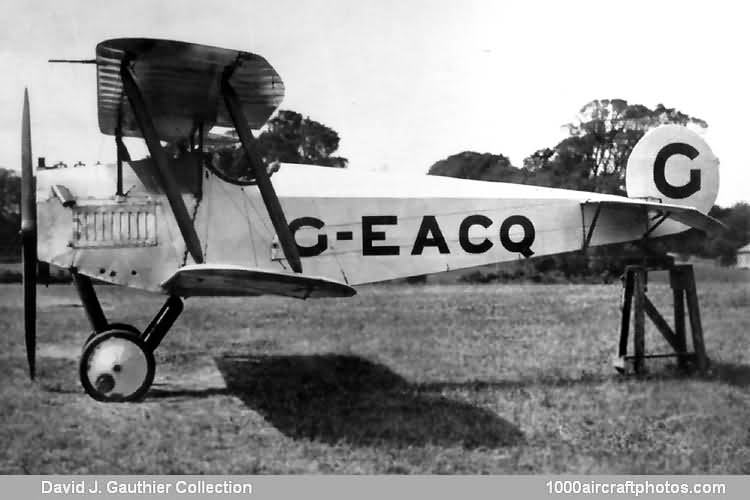01/31/2011. Remarks by Johan Visschedijk: "The Baby, first practical light aircraft produced in Great Britain after WW I, was a conventional single-seat biplane featuring the traditional Avro circular rudder. Eight of these machines were built in the Avro works at Hamble, each and everyone playing its part in laying sure foundations for the light aircraft movement which came in later years.
The prototype K-131 was fitted with the identical 35 hp Green liquid-cooled engine that had been fitted in Alliott Verdon-Roe's famous 1910 Triplane and, despite its age, brought the Baby to victory in the handicap section of the Aerial Derby in June 1919, followed a month later by an outright win in the Victory Trophy Race.
To emphasize that it was no low-powered freak, Avro test pilot H.A. Hamersley flew it non-stop from Hounslow Heath to Brussels, Belgium in 2 hr 50 min in August 1919, afterwards going on to demonstrate it at the Amsterdam Exhibition.
During a stunt-flying session with the Avro joy-riding campaign at seaside resorts later in the year, the markings were changed to G-EACQ, and on the last day of the following May, H.J. Hinkler flew it non-stop from Croydon, over the Alps, to Turin, Italy in 9.5 hours.
After exhibition at the 1920 Olympia Aero Show and participation in the Aerial Derby, Hinkler shipped it to Australia, and on April 11, 1931 flew 800 mls (1,287 km) non-stop from Sydney to Bundaberg in 9 hr to set up an Australian long-distance record. A few weeks later, after a forced landing on a beach in tropical rain, it was towed 16 mls (26 km) to Newcastle by a horse-team, and in 1936 was still flying as VH-UCQ."
